
 Flash News
Flash News
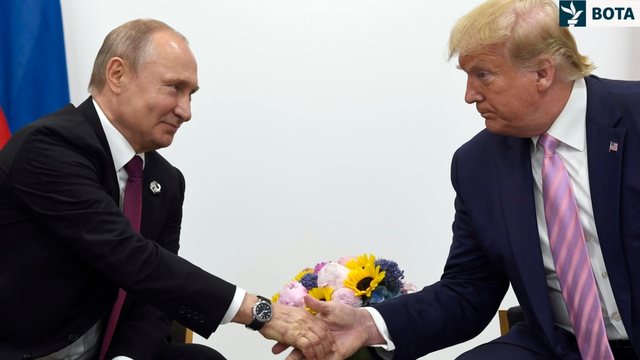
They reached an agreement for a ceasefire. But what ceasefire?
Three years after the start of Russia's full-scale invasion of Ukraine, the White House and the Kremlin announced on March 18 the achievement of a broad agreement aimed at ending the conflict that has killed and wounded more than 1 million men on both sides.
The agreement was announced after a nearly two-hour phone call between Presidents Donald Trump and Vladimir Putin. It was the second phone call of the Trump presidency and perhaps the most important yet.
Ukraine, facing great pressure from the White House, had previously signed the American proposal for a 30-day ceasefire, on the condition that Russia do the same.
"My main conclusion here is that Moscow is quite comfortable with Trump, but for reasons other than those that almost everyone mentions," Nikolai Sokov, a former Russian diplomat who now works at the Vienna Center for Disarmament, told Radio Free Europe. "Moscow can negotiate with Trump, while Europe insists that its position is right and should be accepted without negotiations."
In terms of direct military action, the agreement changes nothing on the battlefield, where Russian troops have, until recently, continued to weaken Ukrainian defenses along a 1,100-kilometer front line.
Ukrainian troops are withdrawing from Russia's Kursk region, which they occupied nearly seven months ago, in an effort to ease the burden on parts of the front line and secure a bargaining chip for future peace talks.
An important element of the March 18 agreement is the focus on energy infrastructure.
Since at least November 2022, Russia has been severely damaging Ukraine's energy grid: power plants, transmission lines, transformers, and substations - a strategy aimed at exhausting and terrorizing Ukraine's civilian population.
In the face of these attacks, Ukraine has struggled to keep the lights and heat on, but has managed to cope thanks to local ingenuity and great support from the West.
At the same time, Ukraine has accelerated the development of its drone industry and even cruise missiles, which it has increasingly used to target Russia's energy infrastructure: oil refineries, pipelines, and military facilities.
Speaking at a press conference in Helsinki, Ukrainian President Zelensky, who has in the past expressed support for a ceasefire that excludes ground action, appeared to criticize the new agreement.
“Ne gjithmonë kemi mbështetur idenë për të mos goditur objektivat energjetike, si dhe objektivat në det, prodhimin e ushqimit dhe transportin”, tha Zelensky pas telefonatës mes Kremlinit dhe Shtëpisë së Bardhë.
“Tani, duhet të kuptojmë se cilat janë hollësitë e kësaj marrëveshjeje. Ne nuk i dimë ende”, shtoi ai.
"Kjo mund të jetë një mënyrë për të qenë më afër një armëpushimi", tha Zelensky. "Hap pas hapi. Por, pjesa tjetër mbetet statistika të realitetit: qindra dronë dhe raketa vazhdojnë të bien jo mbi fushën e betejës, por kudo".
Themeli për armëpushimin u arrit në Xhedah, Arabinë Saudite, pas takimeve mes delegacioneve ukrainase dhe amerikane. Dy ditë më pas, Putini iu përgjigj propozimit me një përgjigje që mund të përkufizohet si "po, por".
"Gjatë bisedës, Donald Trump propozoi që palët në konflikt të përmbahen reciprokisht nga sulmet ndaj objekteve të infrastrukturës energjetike për 30 ditë", thuhet në deklaratën e Kremlinit mbi telefonatën e 18 marsit. "Vladimir Putin iu përgjigj pozitivisht nismës dhe menjëherë i dha ushtrisë ruse urdhrin përkatës".
Ndalimi i kufizuar i sulmeve ndaj objekteve energjetike në Ukrainë – dhe në Rusi – është një fitore për Kievin.
Megjithatë, mund të përfundojë si një fitore edhe më e madhe për Moskën, tha Sokov.
“Vini re se për 30 ditë, Rusia do të vazhdojë të prodhojë armë dhe do të jetë në gjendje t’i rifillojë sulmet në shkallë të gjerë nëse është e nevojshme”, tha ai për REL-in.
“Ndërkohë, Ukraina nuk do të mund t’i riparojë plotësisht dëmet në infrastrukturën energjetike, nga e cila ka humbur një të tretën, sipas vlerësimeve të ndryshme”, shtoi ai.
Çfarë mungoi në bisedime – të paktën në njoftimet publike nga Kremlini dhe Shtëpia e Bardhë – ishte përmendja e centralit bërthamor të Ukrainës në Zaporizhja, i cili është më i madhi në Evropë dhe i dërguari amerikan Steve Witkoff kishte thënë se mund të ishte në tavolinën e bisedimeve.
Nuk u përmend as njohja e Krimesë ukrainase, të aneksuar prej Moskës, nga SHBA si territor rus, diçka që ishte thënë se mund të ndodhte.
Ashtu siç nuk u përmendën ambiciet e Ukrainës për t’u bërë anëtare e NATO-s, gjë që Moska e kundërshton ashpër dhe madje e ka cituar si arsyetim për vendimin e saj për të pushtuar atë në shkurt të vitit 2022.
Deklarata e Shtëpisë së Bardhë përmendi çështje më të gjera gjeopolitike – një shenjë drejt një pozite që Moska po e mbështet: që çdo marrëveshje me Uashingtonin duhet të jetë marrëveshje më e gjerë, e cila preken edhe çështje që nuk kanë lidhje me Ukrainën.
Kjo është temë e përsëritur për Putinin, i cili ka përdorur termin "shkaqet rrënjësore" – një shprehje e shkurtër për pakënaqësinë e Kremlinit me tërë marrëdhëniet ndërkombëtare pas Luftës së Ftohtë.
Por, zgjerimi i bisedimeve përtej vetë Ukrainës ishte diçka që pasardhësi i Trumpit, Joe Biden, e kundërshtonte.
"The leaders agreed that the move towards peace will begin with an energy and infrastructure ceasefire, as well as technical negotiations to implement a naval ceasefire in the Black Sea, a complete ceasefire, and permanent peace," the White House said.
"These negotiations will begin immediately in the Middle East," she announced.
"They also discussed the need to stop the proliferation of strategic weapons and will engage with other countries to ensure the broadest possible application," the statement said. "The two leaders shared the view that Iran should never be in a position to destroy Israel."
It is also not clear whether the subtle difference in wording between the communiqués is significant: "energy infrastructure" according to the Kremlin versus "energy and infrastructure" according to the White House.
And the proliferation of strategic weapons – nuclear or otherwise – has been an easy goal that Washington and Moscow have shared in the past, until mistrust and political suspicions crept into the effort.
The two states – which hold the world's two largest nuclear arsenals – are still bound by the last major arms control treaty between them, although it is set to expire next year, and there has been no effort to begin talks on a successor treaty.
Ultimately, however, the expansion of the scope of the talks fits into the Kremlin's broader hopes for a broader reworking of international rules: Moscow's desire to be treated as an equal by the United States - as it was during the Soviet Union./REL
Latest news


Not only the body, swimming also helps the brain
2025-07-05 21:02:49
"Be careful with the water", Alimehmeti warns about the health risks of summer
2025-07-05 20:39:10
PSG beats Bayern Munich 2-0, advances to Club World Cup semifinals
2025-07-05 20:19:38

Two vehicles collide on the Elbasan-Peqin axis, drivers injured
2025-07-05 19:26:29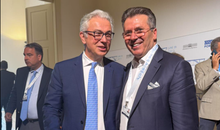

What does Zelenskyy have more than Zegjineja?
2025-07-05 18:45:26

Fiscal peace, but at a cost
2025-07-05 18:00:10
'Bankers' tax evasion, Chinese CEO and former director jailed
2025-07-05 17:39:21
Kyle Walker joins English club on two-year deal
2025-07-05 17:20:24
Two cars collide on the Saranda-Delvina axis, 4 injured
2025-07-05 17:05:29
Touching gesture! Liverpool will pay Jota's family's salary until 2027
2025-07-05 16:45:18
The zodiac signs that cheat most often
2025-07-05 16:25:53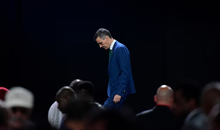

"I asked for the dismissals", Dredha tries to soften Rama's 'blow' in Vlora
2025-07-05 15:48:49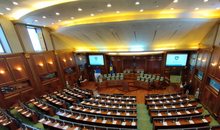
Bomb threat in Parliament, prosecutor: It was a lie
2025-07-05 15:22:28
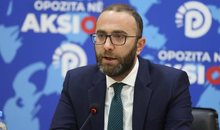
Bardhi: The recount revealed how greedy Zeqine Balluku is in stealing
2025-07-05 14:44:29
Knife wound on the secondary road Tirana-Durrës, perpetrator sought
2025-07-05 14:37:54
Tears and pain, Diogo Jota is escorted to his final home
2025-07-05 14:21:34
Success starts with yourself! Simple ways to invest in personal development
2025-07-05 13:58:50
Unlicensed firearms found in apartment, 50-year-old arrested in Lushnje
2025-07-05 13:43:11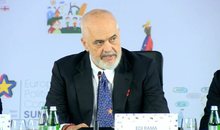

Tirana Court remands Skerdi Sina to prison
2025-07-05 12:59:34
Cocaine laboratory in Greece, here are the Albanians arrested and wanted
2025-07-05 12:40:16
Directed Justice/Vangjeli: SPAK does not investigate any scandal involving Rama
2025-07-05 12:22:03
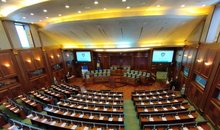
Bomb alert, Police remove MPs and media from Kosovo Parliament building
2025-07-05 11:48:16
"The will of the people" and the irony of ordered resignations
2025-07-05 11:32:05
Summer drowning risk: How to enjoy the water without risking your life
2025-07-05 11:20:27
Fire situation in the country, 16 fires reported in 24 hours, 4 still active
2025-07-05 11:07:04
Car hits pedestrian at white lines, injured in serious condition in Vlora
2025-07-05 10:59:58
Mosquito-borne diseases are a growing problem in Europe
2025-07-05 10:44:13



One of Sweden's most dangerous and wanted criminals arrested in Turkey
2025-07-05 09:38:29
Foreign exchange/ How much foreign currencies are bought and sold today
2025-07-05 09:18:38

"Don't be influenced by the opinions of others", today's horoscope
2025-07-05 08:40:50

Morning Post/ In 2 lines: What mattered yesterday in Albania
2025-07-05 08:02:07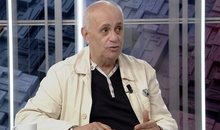

Trump says he's ready to raise tariffs to 70% on some countries
2025-07-04 22:35:52
Tre shenjat e zodiakut që do ‘pasurohen’ në Korrik
2025-07-04 22:05:09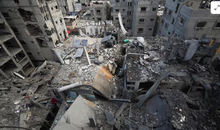
Gaza War: Hamas Accepts US Proposal for 60-Day Ceasefire
2025-07-04 21:50:10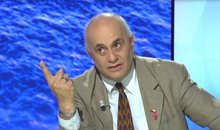
Autocracy in Albania, Fuga: Governance has gotten out of control
2025-07-04 21:40:51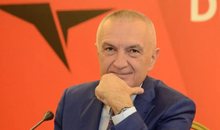
Meta: Agriculture on credit, the new fraud!
2025-07-04 21:26:39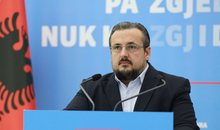




Vote recount in Durrës ends without changes
2025-07-04 20:12:54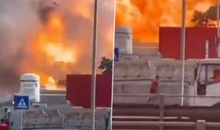
Gas station explodes in Rome, 25 injured (VIDEO)
2025-07-04 20:00:20

These afternoon habits often sabotage weight loss
2025-07-04 19:39:28
Former Arsenal player Thomas Partey accused of rape
2025-07-04 19:24:21
Shepherd disappears without a trace in Delvina
2025-07-04 19:14:31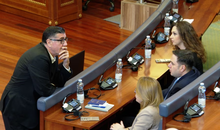
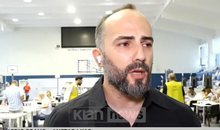
Bardho gave Zegjine's mandate/Braho: Unfair! It violates the electoral system
2025-07-04 19:01:08

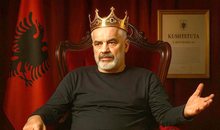
Rapid developments in the Sultanates!
2025-07-04 18:00:06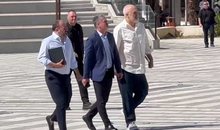



Italy tightens rules for skateboard traffic
2025-07-04 17:20:18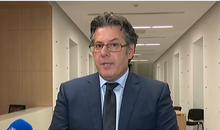

Unusual for the time, dense fog covers the coast of Vlora
2025-07-04 16:48:01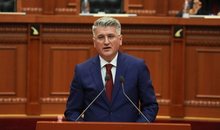
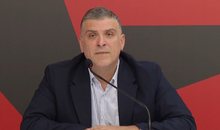

Accident on the Shkodra-Lezhë axis, one dead and 3 injured
2025-07-04 16:14:19
Albania with fewer requests for asylum and Albanian citizenship in 2024
2025-07-04 16:06:57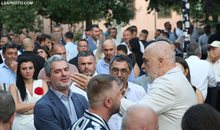
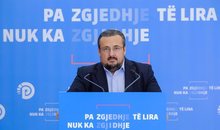
Albania last for quality of life, DP: Technical government is the solution!
2025-07-04 15:42:30
Nico Williams says "No" to Barcelona, signs with Athletic Club until 2035
2025-07-04 15:33:35
Fires in the country, four fires are still active, what is the situation?
2025-07-04 15:24:20

Summer brings big changes for these 4 zodiac signs
2025-07-04 15:00:04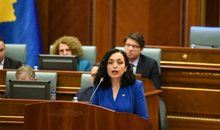
Osmani: MPs need to agree to a secret ballot for the Speaker of Parliament
2025-07-04 14:51:09
Serious accident on the Peqin-Elbasan axis, two injured
2025-07-04 14:37:56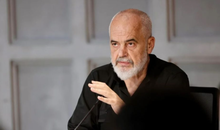
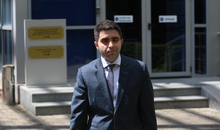
GJKKO leaves in force the security measure for the head of the KPP
2025-07-04 13:58:17
Who will replace Ilir Meta and take over the leadership of the PL?
2025-07-04 13:50:36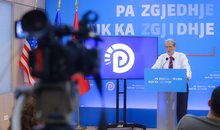
Berisha: Dismissal of directors in Vlora, another act of 'scapegoats'
2025-07-04 13:41:46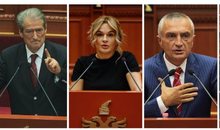

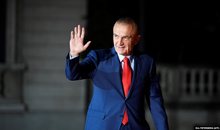
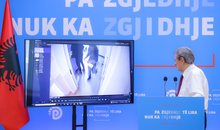

Librazhd/ In a serious psychological state, the young man consumes pesticides
2025-07-04 13:05:07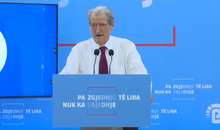


Weapons trafficked from Kosovo to Albania, two arrested, 8 pistols seized
2025-07-04 12:33:28
Konsumimi i tepërt i çokollatës, ja cilat janë dëmet që shkakton në organizëm
2025-07-04 12:23:35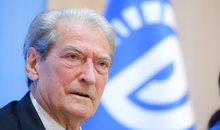
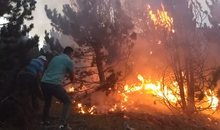
Fires in the country, 21 fires in the last 24 hours, 4 still active
2025-07-04 12:00:19
WB calls for debt transparency: Albania to publish details of every loan
2025-07-04 11:50:05
